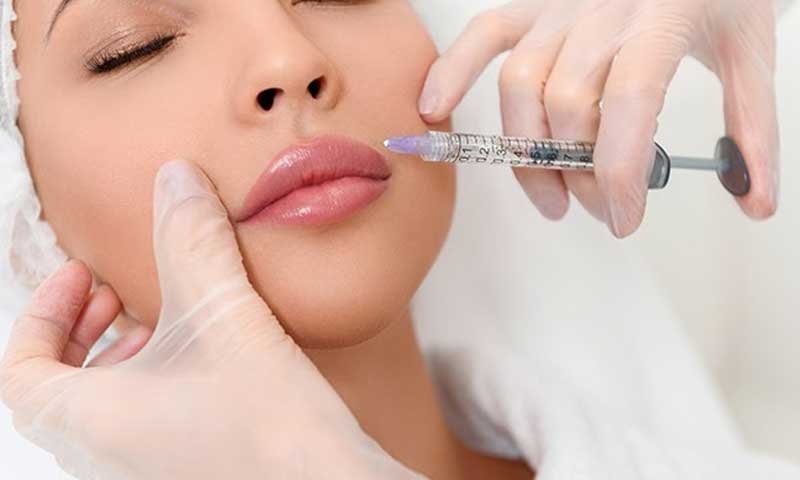Botulinum toxin, commonly known as Botox, is a neurotoxic protein that is used for preventing the release of the neurotransmitter acetylcholine. In simple words, Botox is an injectable muscle relaxer that is used as a cosmetic treatment. Botox cosmetic consists of botulinum toxin type A, which temporarily paralyzes the muscles and reduces wrinkles on the face. But Botox is a lot more than just a cosmetic treatment and has numerous other advantages.
Table of Contents
Advantages of Botox
Botox can be injected in the glabellar region (the area between the eyebrows) to treat frown lines of moderate to severe magnitude. The same can also be used around the eyes to treat a condition commonly called the crow’s feet lines. Since the treatment is minimally invasive, it can be used as a safe treatment for fine wrinkles and fine lines on the glabellar region and around the eyes. Other than its cosmetic advantages, Botox can also be used to treat excessive underarm sweating, lower limb spasticity, chronic migraines, axillary hyperhidrosis, blepharospasm, cervical dystonia, strabismus, and overactive bladder.
Is Botox Approved?
Botox was first approved by the FDA in 1989 for the treatment of eye muscle problems, like blepharospasm. It was approved as a cosmetic treatment in 2002 for treating moderate to severe lines in the glabellar region. The FDA approved Botox in 2013 as a treatment for wrinkles around eyes (crow’s feet). Other third-party studies and researches also indicated that Botox treatment is a safe, effective, and simple treatment for treating frown lines and crow’s feet.
Pre-Botox Preparations
Since Botox treatment is a non-surgical office treatment, minimal preparations are required. The person that is going for the therapy should tell the treatment provider about all their medical history, medical conditions, or allergies before starting the treatment. The treatment provider should be a licensed medical practitioner, nurse, or physician assistant. The receivers of treatment have to remove all their make up and cleanse the treatment area before proceeding to the procedure. The receivers of the therapy also need to avoid blood thinners like aspirin to prevent bruises during the treatment.
Working of Botox Cosmetic
Botox temporarily blocks muscle contractions and nerve signals and thus, improves the appearance of the region around the eyes and the glabellar area. The Botox treatment also prevents the contraction of facial muscles, which slows down the formation of more fine lines. Since the procedure is minimally invasive, it does not require any anesthesia or other incisions.
If the receiver is too concerned about the discomfort or pain, ice or topical anesthetic can numb the area of treatment. In the procedure, the provider will use thin needles to deliver two to four botulinum toxin type A injections in the glabellar region for treating frown lines. Three injections around each eye are delivered for treating crow’s feet. The complete procedure takes around ten minutes.
What to Expect After a Botox Treatment?
The receiver should not massage, rub, or apply pressure to the treated area as it can cause the chemical to spread to other regions of the body. If this happens, it can have a negative impact. In the case of the treatment of frown lines, it is recommended to not to bend over or lay down for three to four hours. This is important because doing so can cause the Botox chemical to slip under the orbital rim, which can result in an eyelid droop.
However, in most cases, there is no expected downtime, and you can get back to normal life, after the treatment. It is essential to comprehend possible results and have realistic expectations. Considerable improvements can be seen after 24 to 48 hours of the treatment. The full effect of Botox cosmetic treatment lasts for around for months. The therapy also relaxes facial muscles and prevents the return of fine lines.
Cost
The cost of a botulinum toxin treatment like Botox Cosmetic treatment is around $300 to $400. The cost of the procedure can vary depending upon the number of injections, the geographic location of treatment, and the size of the treatment area. Botox treatment falls in the category of the elective treatment procedure. Health insurances don’t cover the cost of cosmetic treatments.
Side Effects
Side effects of Botox treatment include rashes, allergic reactions, headache, itching, muscle stiffness, difficulty swallowing, nausea, diarrhea, loss of appetite, stomach pain, and muscle weakness. Injection site reactions like bleeding, bruising, redness, pain, swelling, infection, or redness. Other less common side effects are cough, fever, sore throat, runny nose, cold symptoms, flu symptoms, dizziness, respiratory infections, cold symptoms, drowsiness, anxiety, tired feeling, ringing in your ears, and dry mouth.
Rare side effects include urinary tract infections, burning/painful urination, difficulty urinating, increased sweating in areas other than the underarms, and ringing in your ears. During the treatment of blepharospasm, inflammation of the cornea, drooping of the eyelid, itchy eyes, eye dryness, double vision, eye irritation, reduced blinking, increased sensitivity to light, and eyelid swelling may occur.
Alternatives
When it comes to Botox alternatives, dermal fillers are one of the best options. They are mainly used to treat smile lines but can be used to plump up cheeks and lips. Dermal fillers are also a useful treatment for treating wrinkles on the face. They are also used for the reduction of the appearance of scars and hand treatments. However, dermal fillers are not approved for plumping up breasts and other body parts. Dermal fillers, like Botox, are injectible. Dermal fillers also have side effects similar to Botox, like an allergic reaction, bruising, and redness.
The FDA has approved the following a bunch of dermal filler treatments. Calcium hydroxylapatite (Radiesse) is a temporary gel solution that lasts for eighteen months. Collagen is another temporary material that lasts for less than four months. Hyaluronic acid is another temporary material that lasts for six to twelve months. Poly-L-lactic acid (Sculptra, Sculptra Aesthetic) is another synthetic material that lasts for around two years. Polymethylmethacrylate beads are the only type of permanent filler that is available.



















